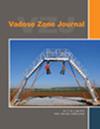回顾和分析泥炭和其他有机土壤的收缩与所选土壤性质的关系
IF 2.8
3区 地球科学
Q3 ENVIRONMENTAL SCIENCES
引用次数: 0
摘要
泥炭和其他有机土壤(如有机矿物土壤)通过干燥和湿润表现出独特的体积变化。体积变化背后的重要过程是收缩和膨胀。关于收缩的研究有着悠久的历史,这些研究是在不同的土壤描述、命名和参数、测量方法和术语方案下进行的。到目前为止,这些研究还没有统一起来,以比较或预测不同土壤性质的收缩,例如堆积密度或基质成分。然而,为了预测微生物分解或泥炭形成引起的二氧化碳排放或吸收,有必要防止在确定基于体积的土壤特性或解释泥炭地海拔测量时出现偏差。本研究全面概述了过去100年中进行的收缩研究。术语和方法被系统地分类。在第一部分中,总结了收缩特性的概念、测量方法和模型方法。第二部分是泥炭和其他有机土壤收缩研究的荟萃分析,通过三维结构光扫描仪获得的测量数据进行了修正。结果表明,最大收缩率在11%至93%之间,受常见土壤性质(植物成分、分解程度、土壤有机碳和堆积密度)的强烈影响。体积密度比土壤有机碳具有更强的相关性,是更好的预测因子,但最大收缩率在所有类型的泥炭和其他有机土壤以及体积密度和土壤有机碳的范围内都有很大的分布。本文章由计算机程序翻译,如有差异,请以英文原文为准。
Reviewing and analyzing shrinkage of peat and other organic soils in relation to selected soil properties
Peat and other organic soils (e.g., organo‐mineral soils) show distinctive volume changes through desiccation and wetting. Important processes behind volume changes are shrinkage and swelling. There is a long history of studies on shrinkage which were conducted under different schemes for soil descriptions, nomenclatures and parameters, measurement approaches, and terminologies. To date, these studies have not been harmonized in order to compare or predict shrinkage from different soil properties, for example, bulk density or substrate composition. This, however, is necessary to prevent biases in the determination of volume‐based soil properties or for the interpretation of elevation measurements in peatlands, in order to predict carbon dioxide emissions or uptake caused by microbial decomposition or peat formation. This study gives a comprehensive overview of shrinkage studies carried out in the last 100 years. Terminology and approaches are systematically classified. In part I, the concepts for shrinkage characteristics, measurement methods, and model approaches are summarized. Part II is a meta‐analysis of shrinkage studies on peat and other organic soils amended by own measurement data obtained by a three‐dimensional structured light scanner. The results show that maximum shrinkage has a wide range from 11% to 93% and is strongly affected by common soil properties (botanical composition, degree of decomposition, soil organic carbon, and bulk density). Showing a stronger correlation, bulk density was a better predictor than soil organic carbon, but maximum shrinkage showed a large spread over all types of peat and other organic soils and ranges of bulk density and soil organic carbon.
求助全文
通过发布文献求助,成功后即可免费获取论文全文。
去求助
来源期刊

Vadose Zone Journal
环境科学-环境科学
CiteScore
5.60
自引率
7.10%
发文量
61
审稿时长
3.8 months
期刊介绍:
Vadose Zone Journal is a unique publication outlet for interdisciplinary research and assessment of the vadose zone, the portion of the Critical Zone that comprises the Earth’s critical living surface down to groundwater. It is a peer-reviewed, international journal publishing reviews, original research, and special sections across a wide range of disciplines. Vadose Zone Journal reports fundamental and applied research from disciplinary and multidisciplinary investigations, including assessment and policy analyses, of the mostly unsaturated zone between the soil surface and the groundwater table. The goal is to disseminate information to facilitate science-based decision-making and sustainable management of the vadose zone. Examples of topic areas suitable for VZJ are variably saturated fluid flow, heat and solute transport in granular and fractured media, flow processes in the capillary fringe at or near the water table, water table management, regional and global climate change impacts on the vadose zone, carbon sequestration, design and performance of waste disposal facilities, long-term stewardship of contaminated sites in the vadose zone, biogeochemical transformation processes, microbial processes in shallow and deep formations, bioremediation, and the fate and transport of radionuclides, inorganic and organic chemicals, colloids, viruses, and microorganisms. Articles in VZJ also address yet-to-be-resolved issues, such as how to quantify heterogeneity of subsurface processes and properties, and how to couple physical, chemical, and biological processes across a range of spatial scales from the molecular to the global.
 求助内容:
求助内容: 应助结果提醒方式:
应助结果提醒方式:


